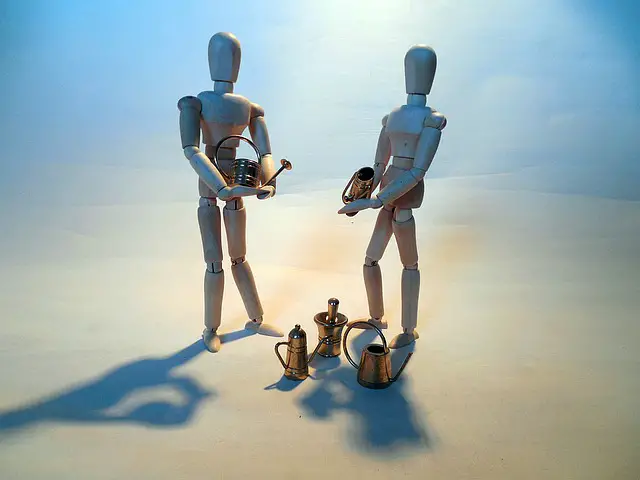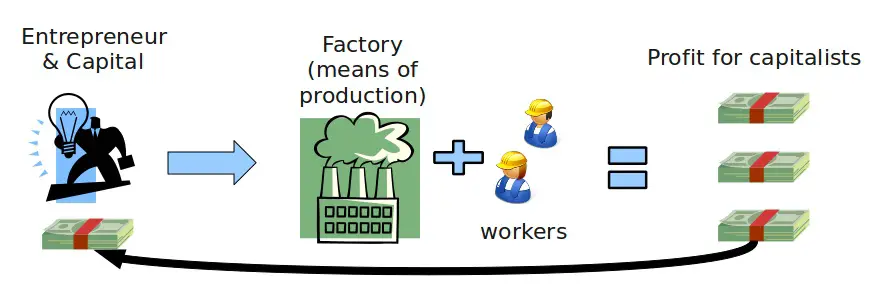Economy and Work

In this article, we’ll explore how the economy came into existence as society evolved, the different economic sectors, and the most common types of economic systems in modern societies.
Click below to go to the main reviewer:
Table of Contents
- A Brief History of Economy
- Factors that Respond to Economic Systems
- Economic Systems
- References
- Download Article in PDF Format
- Test Yourself!
A Brief History of Economy
One of the earliest social structures is the economy.
Some ancient forms of writing were even developed for recording purposes between merchants. Sociologists held on to the claim that there had been some forms of the economy (the optimum management of society’s resources) as early as the pastoral and horticultural societies when people began to learn and develop skills of cultivating crops and domesticating animals.
Families started to produce surplus goods and with the increased food production, individuals no longer felt the need to work all day long—eventually leading to the emergence of new jobs and specializations.
Storing, handling, and transporting of surplus goods became a requirement. People then engaged in trading with their goods and services.
The oldest form of commerce is bartering. It is a system where individuals exchange their goods and services without the use of money. This is simply based on whether one has what the other person needs at the same time.

Prior to bartering, the use of resources during the hunter-gatherer society was in the term of usufruct, or the practice of resource distribution according to one’s needs.
To have a more efficient exchange of goods and services, money came into existence. It was birthed from the idea of having a means of exchange that can be used for payment at any time. Money is an object utilized for payment and with an assigned value that is agreed upon by society.
The rapid development of economies happened as city-states (polis) grew as well.
Factors that Respond to Economic Systems
The economy is composed mainly of four sectors, namely:
- Primary sector – this is part of the economy that utilizes raw materials coming directly from the earth’s resources. People within this sector are referred to as red-collar workers and most of their activities include agriculture.
- Secondary sector – this sector is predominantly composed of blue-collar workers from the manufacturing industry as they transform raw materials into finished and valuable products.
- Tertiary sector – this is the service-oriented economy, rather than product-driven. Activities here include production and exchange carried out by white-collar workers.
- Quaternary sector – under the tertiary sector is the quaternary sector that is comprised of the specialized activities that are information and knowledge-based services.
- Quinary sector – these are made up of gold-collar professions that focus on high-levels of decision making.

More advanced economies lean more toward tertiary sectors, as well as quaternary and quinary, while less advanced economies are more on the side of the primary sector.
From a structural-functionalist perspective, an economy makes society possible as it continues to ensure the provision of goods and services that it needs.
Regardless of the type of economy a society has, the economy plays an essential function. A healthy economy reflects a healthy nation.
But the structural-functionalist perspective also recognizes the cycles of the economy where a recession (an economic decline that lasts for consecutive quarters) can happen; and worse, economic depression (a sustained recession that is at least more than three years). When this happens, other social institutions are to adjust.
Work, on the other hand, as viewed from this perspective, gives nonmaterial benefits to people. Not only do people receive income but work also occupies them with a sense of self-fulfillment.
Unlike structural-functionalism, the conflict perspective has a very negative view of the economy. For the latter, the economy manifests and perpetuates economic inequality, particularly in a capitalist society. Society’s wealth is mostly concentrated in the hands of the elite and the economy allows them to maintain their position at the top of society’s ladder while keeping those working class in their place, at the bottom.
Conflict perspective adds that work causes alienation. Alienation, according to Karl Marx, is the estrangement of a person from the rest of humanity. When this worker enters a capitalist workplace, he is then directed to the goals dictated by the bourgeoisie (ruling class).
In the course of his work, the worker becomes separated from the product and process of the labor, from self, and from others.
Symbolic interactionism uses a micro-lens in terms of looking at the economy and is interested in the day-to-day social interactions in workplaces and how they view their jobs and respond to the challenges they face.
Economic Systems
In modern societies, the most prevalent types of economic systems are capitalism and socialism.
Capitalism is an economic system where the provision of goods and services are privately owned. Characterized by the goal of having a profit, the society benefits as a whole as an individual maximizes their wealth.

As businesses compete with one another for more profit, they create ways and schemes for their products to be more in demand. Part of this is offering their products at a cheaper price that is likewise beneficial to society. This kind of competition in a capitalist society ensures also that the market is not controlled by a single party.
Furthermore, this economic system is also marked with laissez-faire—that is, free from government interventions.
In contrast with capitalism, the means of production in socialism are collectively owned. This system is not driven by personal profit, but instead deems the needs of society as more important. Competition is out of the picture and the economy is directly controlled by the government.
Marx believed that a socialist economic system would then lead to a classless society where all members are equal.
There are also societies that combine these two, creating what they call as democratic socialism. This is a type of economic system where some important industries are owned by the government and other properties are privately owned.
References
George, A. (2020). Sectors of the Economy: Primary. Secondary, Tertiary, Quaternary, and Quinary. Retrieved from https://www.clearias.com/sectors-of-economy-primary-secondary -tertiary-quaternary -quinary/
Horowitz, A. (n.d.). Marx’s Theory of Alienation. Retrieved from http://www.yorku.ca/horowitz/ courses/ lectures/35_marx_alienation.html
Little, W. (2014). Introduction to Sociology – 1st Canadian Edition. Victoria, B.C.: BCcampus.
Lumen. (n.d.). Overview of the Economy. Retrieved from https://courses.lumenlearning. com/atd-herkimer-socialproblems/chapter/12-1-overview-of-the-economy/
Next topic: Social Change and Current Trends
Previous topic: Social Institutions
Return to the main article: The Ultimate Social Science Reviewer
Download Article in PDF Format
Test Yourself!
1. Practice Questions [PDF Download]
2. Answer Key [PDF Download]
Written by Arleia Agustin
Arleia Agustin
A graduate of Bachelor of Arts in Sociology, Arleia Agustin took interest in research and writing during her collegiate years. The time she spent at the University of the Philippines Los Baños taught her the essence of social sciences, to understand the society in each of its facets, and to believe that it could be changed for the better. She loves to read, dream, observe and discover beautiful stories of the people she encounters.
Copyright Notice
All materials contained on this site are protected by the Republic of the Philippines copyright law and may not be reproduced, distributed, transmitted, displayed, published, or broadcast without the prior written permission of filipiknow.net or in the case of third party materials, the owner of that content. You may not alter or remove any trademark, copyright, or other notice from copies of the content. Be warned that we have already reported and helped terminate several websites and YouTube channels for blatantly stealing our content. If you wish to use filipiknow.net content for commercial purposes, such as for content syndication, etc., please contact us at legal(at)filipiknow(dot)net
